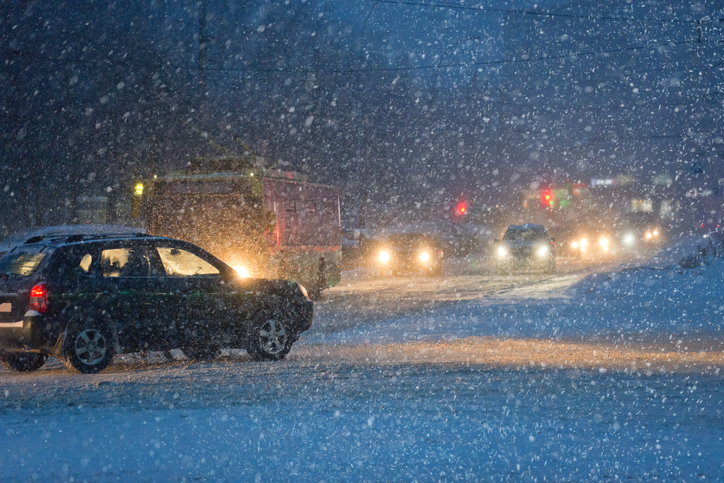Next time you need to drive in the snow, make sure you avoid these mistakes. All Tech Automotive found this article on How Stuff Works Auto.

5 Common Mistakes You Should Avoid While Driving in the Snow
1. Thinking Your Four-wheel Drive Makes You Invincible
While vehicles with four-wheel drive typically do perform better in snowy and icy driving conditions, the technology can backfire by giving drivers a false sense of safety.
Four-wheel drive is used to send the specific amount of needed torque to each of your car's four tires to give it added traction to move forward through snowy roads. That doesn't mean, however, that you can race down the road at top speed in the snow and bring yourself to a quick stop. Four-wheel or all-wheel drive isn't going to give you the traction you need to brake. It can help you get through some difficult conditions, but it doesn't make you SuperSUV.
2. Not Being Prepared
Many drivers find themselves caught off guard during the winter's first snow. In fact, the most dangerous day to be on the roads is the day after the first snowstorm [source: Elliott]. Drivers haven't prepared their cars for the wintry weather, and they've probably forgotten their snow driving techniques from last year.
To ready your car for the winter, check that each of your tires has at least a 6/32-inch (4.8-millimeter) deep tread. All-weather tires can handle most driving conditions, but if you live in an area that gets a lot of snow, you should consider purchasing snow tires. Check your antifreeze levels and battery power and make sure that your defroster and rear window defogger work.
As far as the inside of your car goes, purchase a snow shovel and kitty litter or sand for digging yourself out of a jam and giving your vehicle traction. Flares, a flashlight and a snow scraper should also be kept in your car. Finally, consider signing up for a winter driving class in your area.
3. Following Too Closely
Many people inexperienced with driving in the snow make a bad habit out of tailing the vehicle in front of them too closely. Like driving too fast, this lessens your reaction time if there's a problem with the vehicle ahead of you and you need to slow down suddenly.
It's recommended that you double (or if you want to be really cautious -- triple) your normal distance between cars, giving yourself a minimum braking distance of six seconds. Put another way, for every 10 mph (16 kph) you're traveling, you should give yourself four car lengths of space. So if you're traveling at 30 mph (48 kph), you should have 12 car lengths between you and the vehicle ahead of you.
You should also be looking ahead for stoplights, stop signs and curves in the road so you can give yourself adequate time to brake or steer around them.
4. Slamming on the Brakes
When you feel your tires start to slip, it's easy to panic and slam on the brakes. Don't do it -- this removes traction from your tires, taking away your ability to control your vehicle.
Once you've lost traction and your wheels are locked up, slamming your brakes won't change the situation. What you should do when you feel yourself begin to skid is ease off the accelerator and let the car slow down on its own. A moving tire means that there is still some traction, which is what you need to steer yourself out of a collision.
If braking is required and your vehicle comes with an anti-lock brake system, brake with steady, even pressure. If your car doesn't have ABS, then you should pump the brakes by quickly braking again and again.
When handling snow-covered corners, you should begin a steady braking as you approach the turn. Once in the corner, ease off the brakes and use the car's remaining traction to steer through the turn.
5. Driving Too Fast
Driving too fast is the biggest snow driving error [source: Dunlop]. Drivers have a bad habit of thinking that once they've reached the highway they're fine to drive at their usual high speed. Wrong.
When your car starts to slip and you're heading for a crash, every second counts. Driving too fast reduces the amount of time you have to react and increases the severity of any collision. It also takes four to 10 times longer to brake on icy or snowy pavement than it does on dry asphalt [source: De Paula].
You should slow your speed when the temperature is close to freezing and sleet and snow have begun to fall. Remember that there's no right speed zone to be traveling in when it's snowing, so you need to pay close attention to the road conditions and how your car is handling to gauge a safe speed.
Click here to view the original article.